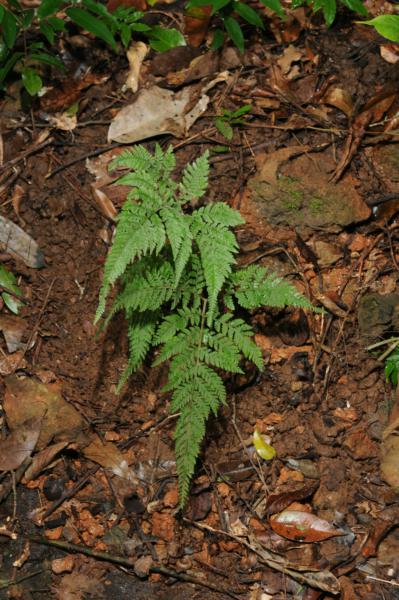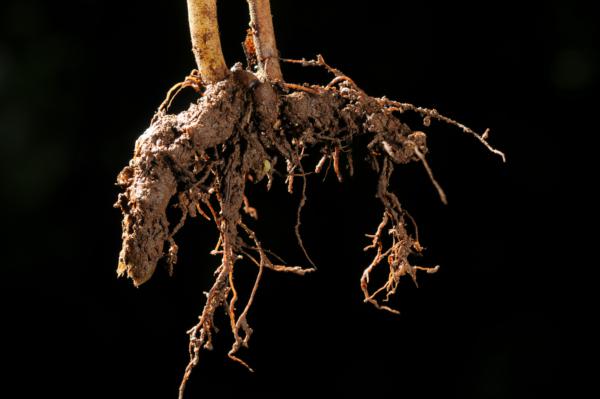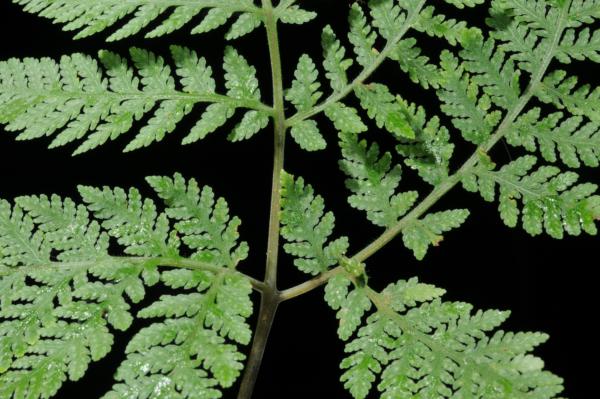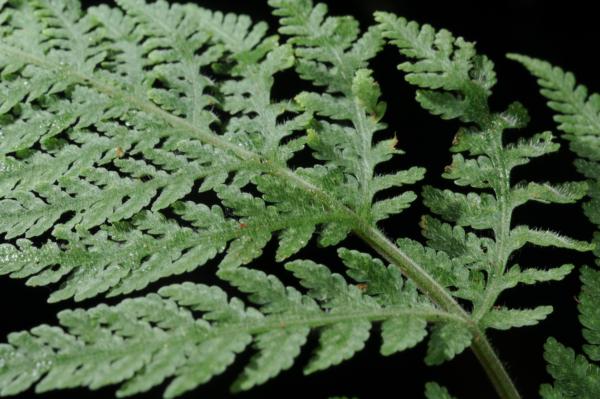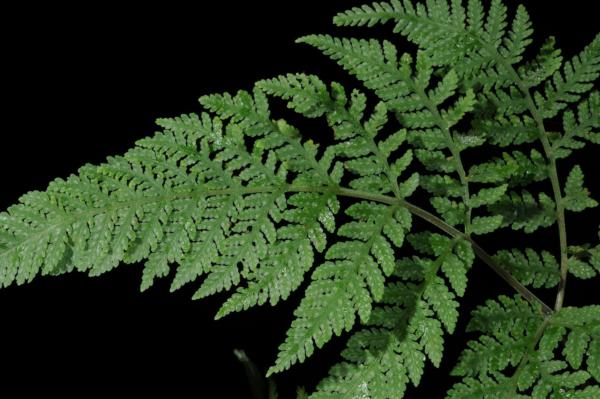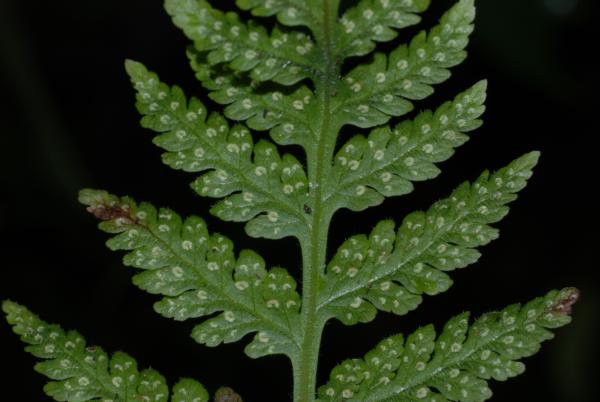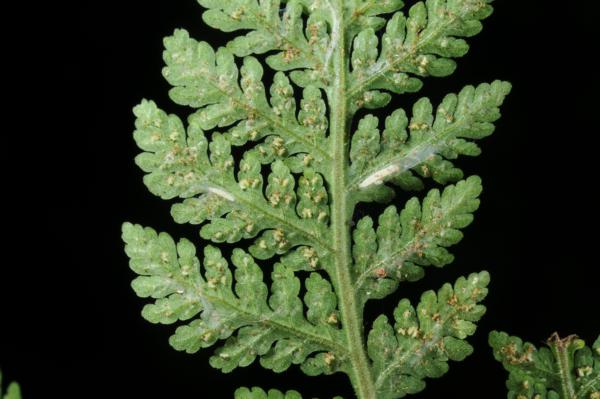
Tectaria manilensis (C.Presl) Holttum
Family
Tectariaceae
Nomenclature
Tectaria manilensis (C.Presl) Holttum, Ind. Fern J. 1: 36. 1984; Holttum, Kew Bull. 43: 478. 1988; Tagawa & K.Iwats., Fl. Thailand 3: 621. 1988; Boonkerd & Pollawatn, Pterid. Thailand: 214. 2000. – Ctenitis manilensis (C.Presl) Holttum, Novit. Bot. Inst. Horto Bot. Univ. Carol. 1968: 36. 1969; Tagawa & K.Iwats., Fl. Thailand 3: 358. 1988; Holttum, Fl. Males., Ser. II, Pterid. 2: 45. 1991. – Lastrea manilensis C.Presl, Epimel. Bot.: 39. 1851 [‘1849’]. – Type: Meyen s.n., Manila (PRC).
Nephrodium parishii Hook., Sp. Fil. 4: 131, t. 260. 1862. – Lastrea parishii (Hook.) Bedd., Ferns Brit. India: t. 43. 1865; Bedd., Handb. Ferns Brit. India: 259, f. 134. 1883. – Lastreopsis parishii (Hook.) Ching, Bull. Fan Mem. Inst. Bial. 8:159. 1938; Holttum, Rev. Fl. Malaya ed. 1, 2: 498, f. 294. 1955 [‘1954’]; Holttum, Dansk Bot. Ark. 23: 238. 1965.
Lastrea chupengensis Ridl., J. Str. Br. Roy. Asiat. Soc. 59: 232. 1911. – Lastreopsis parishii var. chupengensis (Ridl.) Holttum, Rev. Fl. Malaya ed. 1, 2: 498. 1955 [‘1954’]. – Tectaria manilensis var. chupengensis (Ridl.) Holttum, Fl. Males., Ser. II, Pterid. 2: 45. 1991; Boonkerd & Pollawatn, Pterid. Thailand: 214. 2000.
Description
Rhizome creeping, fleshy, up to 4 mm diam., scaly. Stipes rather fleshy, pale to dark brown, glabrous, 10–20 cm long. Laminae tripinnate, broadly triangular, acute to acuminate at apex, up to 20 by 12–25 cm; rachis slender, winged, hairy; pinnae opposite, basal pinnae the largest, up to 15 by 7 cm, asymmetrically oblong-subdeltoid, shortly stalked, the basal basiscopic pinnules much longer; upper pinnae gradually becoming smaller, sessile, oblong-lanceolate, pinnate to bipinnatifid; basal basiscopic pinnule of basal pinna like upper lateral pinna, up to 7 by 2.5 cm; pinnules of upper pinnae oblong, oblique, rounded at apex, lobed at margin; ultimate lobes oblong, moderately acute at apex, entire; thinly herbaceous; veins free, one to each lobe, the apex not reaching the margin; densely hairy, on every axis as well as on both, surfaces of lamina, hairs articulate, coarse. Sori subterminal (often appearing terminal unless sori removed) on short acroscopic branches of veinlets; indusia small, reniform, pale-green and often with a dark centre, glabrous or sparsely hairy .
Distribution in Thailand
NORTHERN: Chiang Mai, Chiang Rai, Lampang, Phrae, Tak; EASTERN: Nakhon Ratchasima; SOUTH-WESTERN: Kanchanaburi, Prachuap Khiri Khan; CENTRAL: Saraburi, Nakhon Nayok; PENINSULAR: Chumphon, Surat Thani, Phangnga, Nakhon Si Thammarat, Satun.
Wider Distribution
Burma, W Malaysia, SW Sulawesi, and Philippines.
Ecology
Usually in crevices of limestone cliffs in light shade at low altitudes, collected fairly commonly throughout Thailand in rainy season.
Similar species
Tectaria tenerifrons (Hook.) Ching
Tectaria devexa (Kunze) Copel.
Hypodematium crenatum (Forssk.) Kuhn
Proposed IUCN Conservation Assessment
Least Concern (LC). This species is common and widespread and not under any known threat.
Notes
The frond is green only in the rainy season, and the rhizome is fleshy, storing reserves for the dry season.
Voucher specimens - Thailand
Middleton et al. 4847, Tak, Wat Tham Inthanin (E); Middleton et al. 4287, Surat Thani, Khao Photha Daeng Lam (E); Middleton et al. 4325, Surat Thani, Khao Sok National Park (E); Middleton et al. 4366, Surat Thani, Tham Wang Badan (E); Middleton et al. 5349, Satun, Thale Ban National Park (E).
Habit
Habit
Rhizome
Rachis and upper bases of pinnae
Upper surface of lamina
Upper surface of lamina
Lower surface of lamina
Sori
Site hosted by the Royal Botanic Garden Edinburgh. Content managed by Stuart Lindsay, Gardens by the Bay, Singapore and David Middleton, Singapore Botanic Gardens. Last updated 24 January 2012
_TP_1819_sml.JPG)
